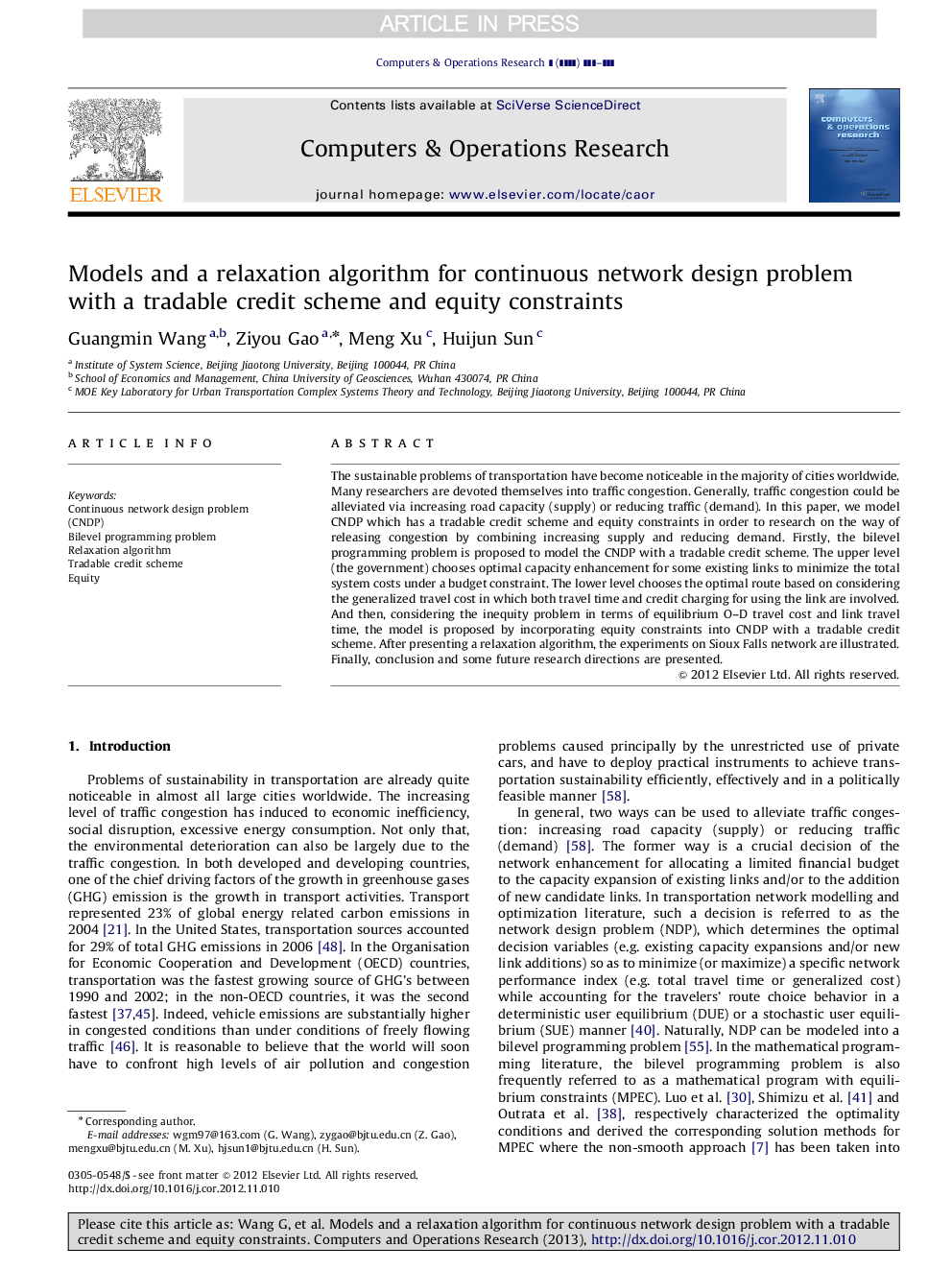| Article ID | Journal | Published Year | Pages | File Type |
|---|---|---|---|---|
| 6893051 | Computers & Operations Research | 2014 | 10 Pages |
Abstract
The sustainable problems of transportation have become noticeable in the majority of cities worldwide. Many researchers are devoted themselves into traffic congestion. Generally, traffic congestion could be alleviated via increasing road capacity (supply) or reducing traffic (demand). In this paper, we model CNDP which has a tradable credit scheme and equity constraints in order to research on the way of releasing congestion by combining increasing supply and reducing demand. Firstly, the bilevel programming problem is proposed to model the CNDP with a tradable credit scheme. The upper level (the government) chooses optimal capacity enhancement for some existing links to minimize the total system costs under a budget constraint. The lower level chooses the optimal route based on considering the generalized travel cost in which both travel time and credit charging for using the link are involved. And then, considering the inequity problem in terms of equilibrium O-D travel cost and link travel time, the model is proposed by incorporating equity constraints into CNDP with a tradable credit scheme. After presenting a relaxation algorithm, the experiments on Sioux Falls network are illustrated. Finally, conclusion and some future research directions are presented.
Related Topics
Physical Sciences and Engineering
Computer Science
Computer Science (General)
Authors
Guangmin Wang, Ziyou Gao, Meng Xu, Huijun Sun,
